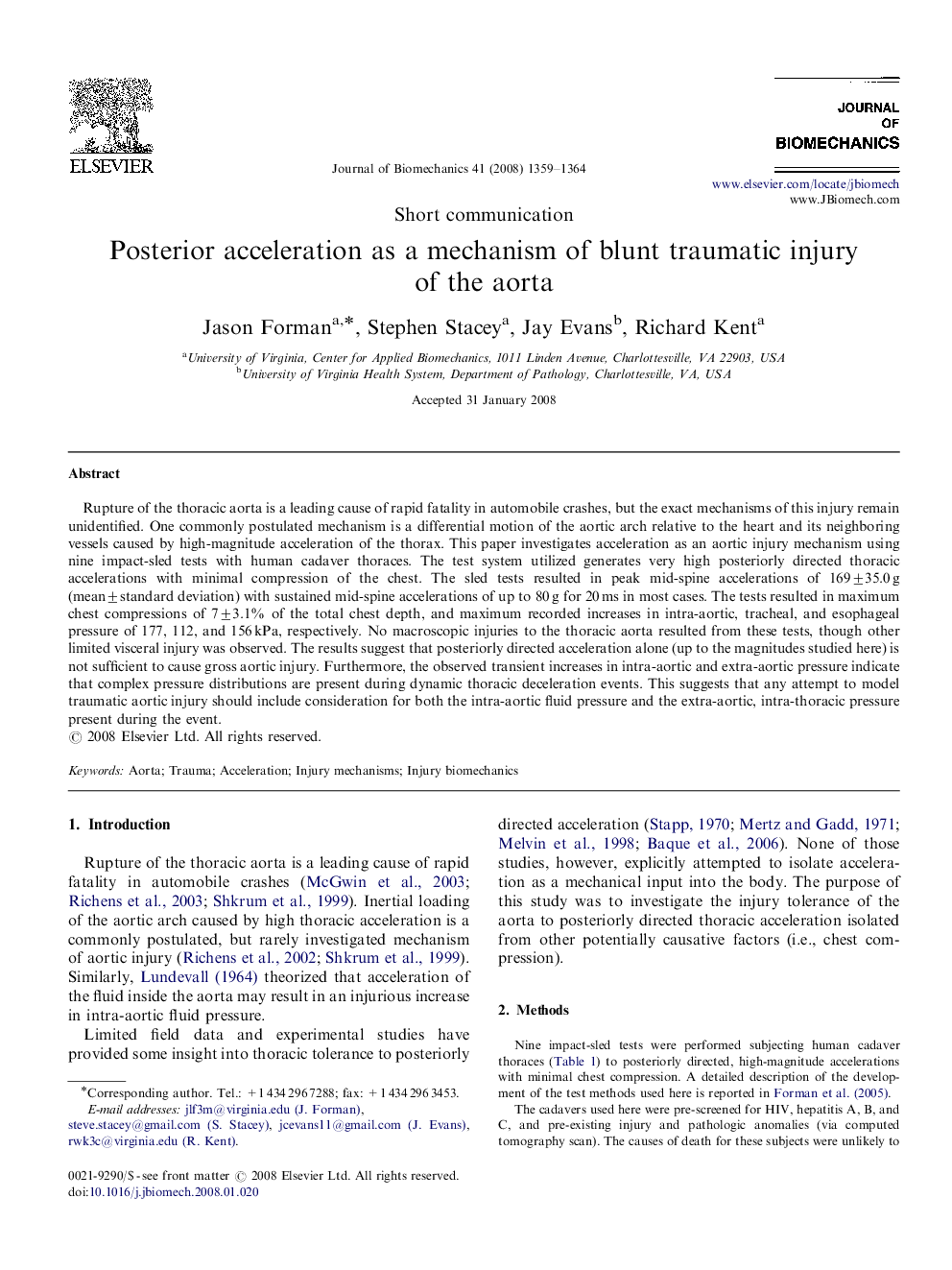| Article ID | Journal | Published Year | Pages | File Type |
|---|---|---|---|---|
| 873274 | Journal of Biomechanics | 2008 | 6 Pages |
Rupture of the thoracic aorta is a leading cause of rapid fatality in automobile crashes, but the exact mechanisms of this injury remain unidentified. One commonly postulated mechanism is a differential motion of the aortic arch relative to the heart and its neighboring vessels caused by high-magnitude acceleration of the thorax. This paper investigates acceleration as an aortic injury mechanism using nine impact-sled tests with human cadaver thoraces. The test system utilized generates very high posteriorly directed thoracic accelerations with minimal compression of the chest. The sled tests resulted in peak mid-spine accelerations of 169±35.0 g (mean±standard deviation) with sustained mid-spine accelerations of up to 80 g for 20 ms in most cases. The tests resulted in maximum chest compressions of 7±3.1% of the total chest depth, and maximum recorded increases in intra-aortic, tracheal, and esophageal pressure of 177, 112, and 156 kPa, respectively. No macroscopic injuries to the thoracic aorta resulted from these tests, though other limited visceral injury was observed. The results suggest that posteriorly directed acceleration alone (up to the magnitudes studied here) is not sufficient to cause gross aortic injury. Furthermore, the observed transient increases in intra-aortic and extra-aortic pressure indicate that complex pressure distributions are present during dynamic thoracic deceleration events. This suggests that any attempt to model traumatic aortic injury should include consideration for both the intra-aortic fluid pressure and the extra-aortic, intra-thoracic pressure present during the event.
